The Starstreak High Velocity Missile (HVM) is designed to counter threats from very high performance, low-flying aircraft and fast ‘pop up’ strikes by helicopter attacks. The missile, which travels at more than three times the speed of sound, uses a system of three dart-like projectiles, allowing multiple hits on the target. HVM can be fired from the shoulder, from a lightweight multiple launcher or from the Stormer armoured vehicle.
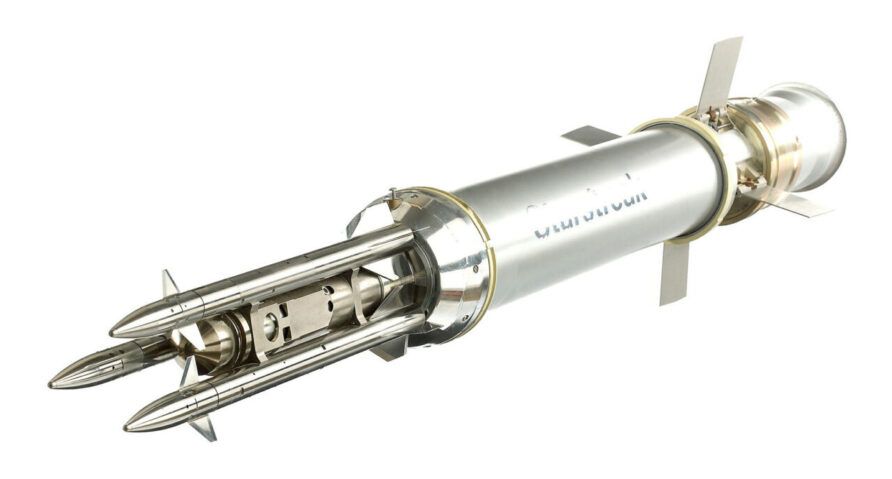
Starstreak HVM History
Starstreak HVM and Martlet LVL share a great deal of common history, covered here
https://www.thinkdefence.co.uk/2022/11/martlet-lightweight-multirole-missile/
Despite Javelin coming into service in the mid-eighties, the MoD formed a requirement for a system that would complement Rapier for manoeuvre forces in Germany. The Royal Armament Research and Development Establishment carried out a detailed study that showed that a high-velocity missile system rather than a gun or a gun/ missile mix was the best solution.
General Staff Requirement (GSR) 3979 for a high-velocity anti-aircraft missile was issued, including a self-propelled version, a three-round lightweight launcher and a single-round man-portable launcher.
British Aerospace, Marconi Command and Control Systems and Shorts were shortlisted and in 1984, the MoD awarded a £23m one-year definition study contract was awarded to both Shorts and British Aerospace
British Aerospace proposed a Mach 4 missile called Thunderbolt that only used kinetic energy to destroy the target.
Thunderbolt was available in an eight-round trainable launcher mounted on the Stormer armoured vehicle


A single round shoulder launcher
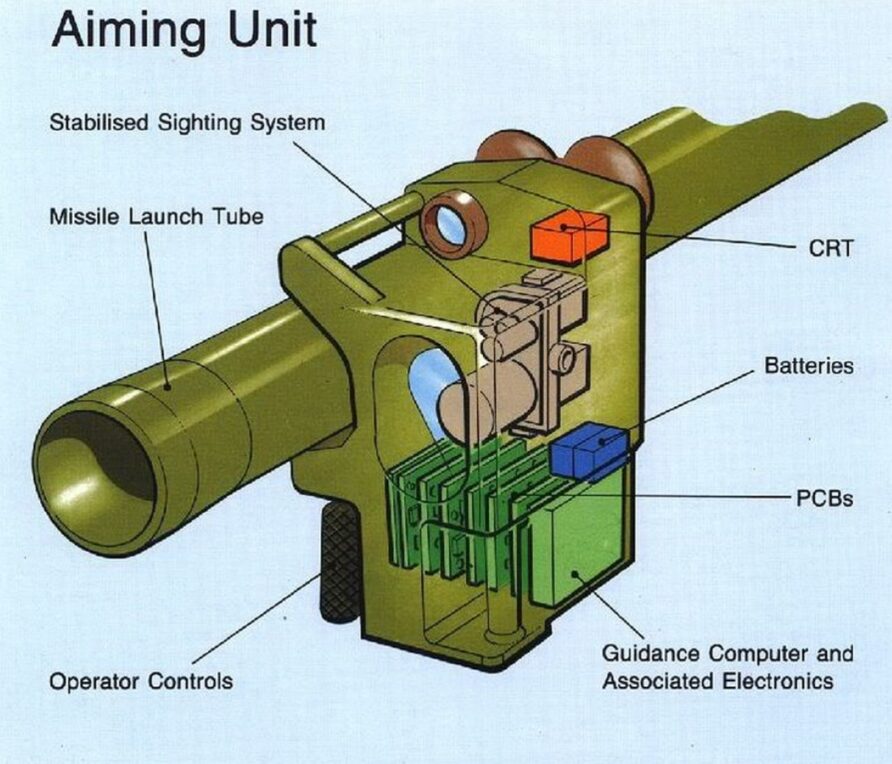
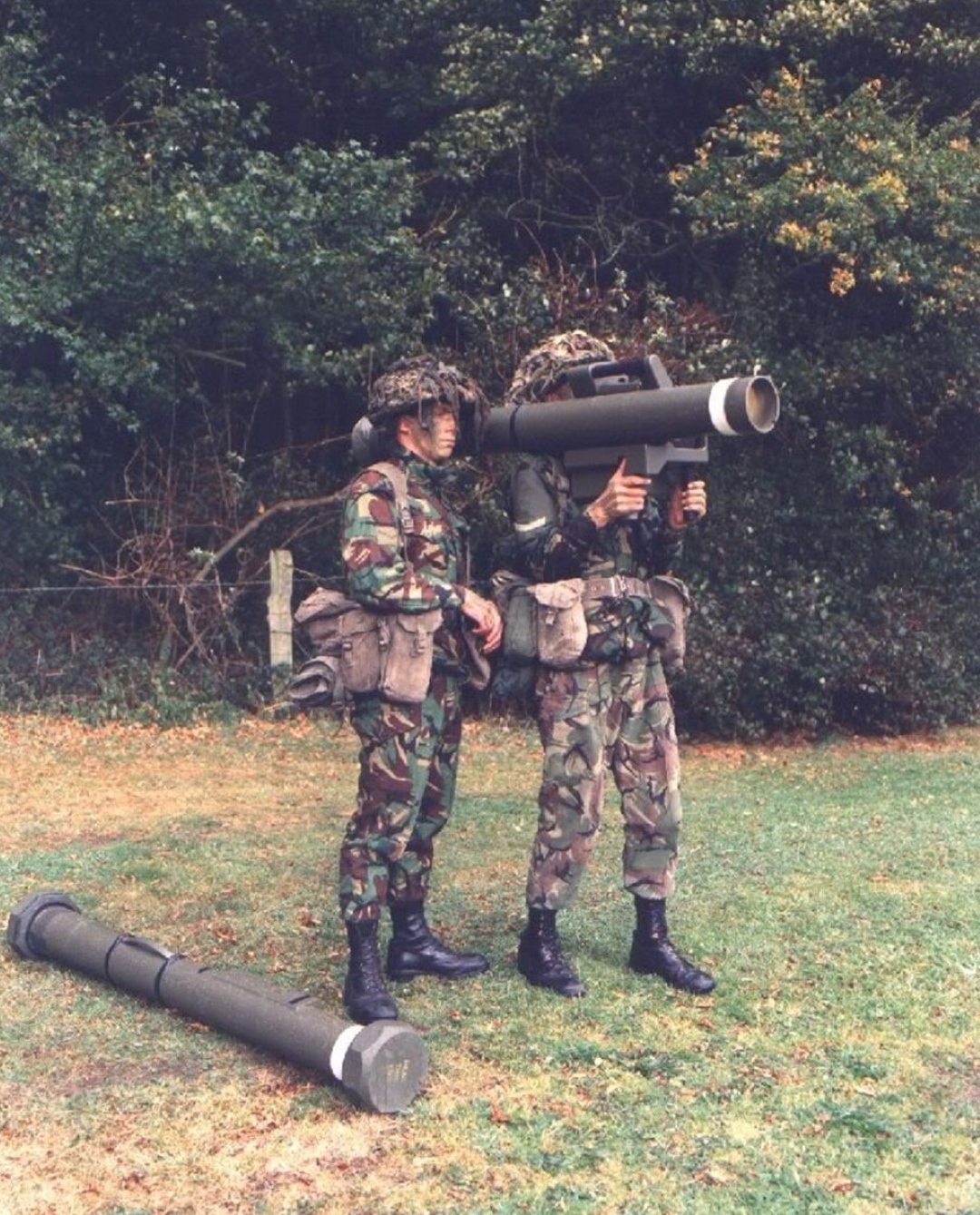
And a four-round pedestal launcher.
Shorts entered the 4 km range High-Velocity Missile called Starstreak S14, also available in the vehicle, shoulder, and pedestal mounting options.
Starstreak had a novel three-dart system, utilising a similar laser beam riding guidance system as used on Javelin S15/Starburst. Before the competition, Shorts had already completed over 100 firings of Starstreak, from 1982.
Starstreak won
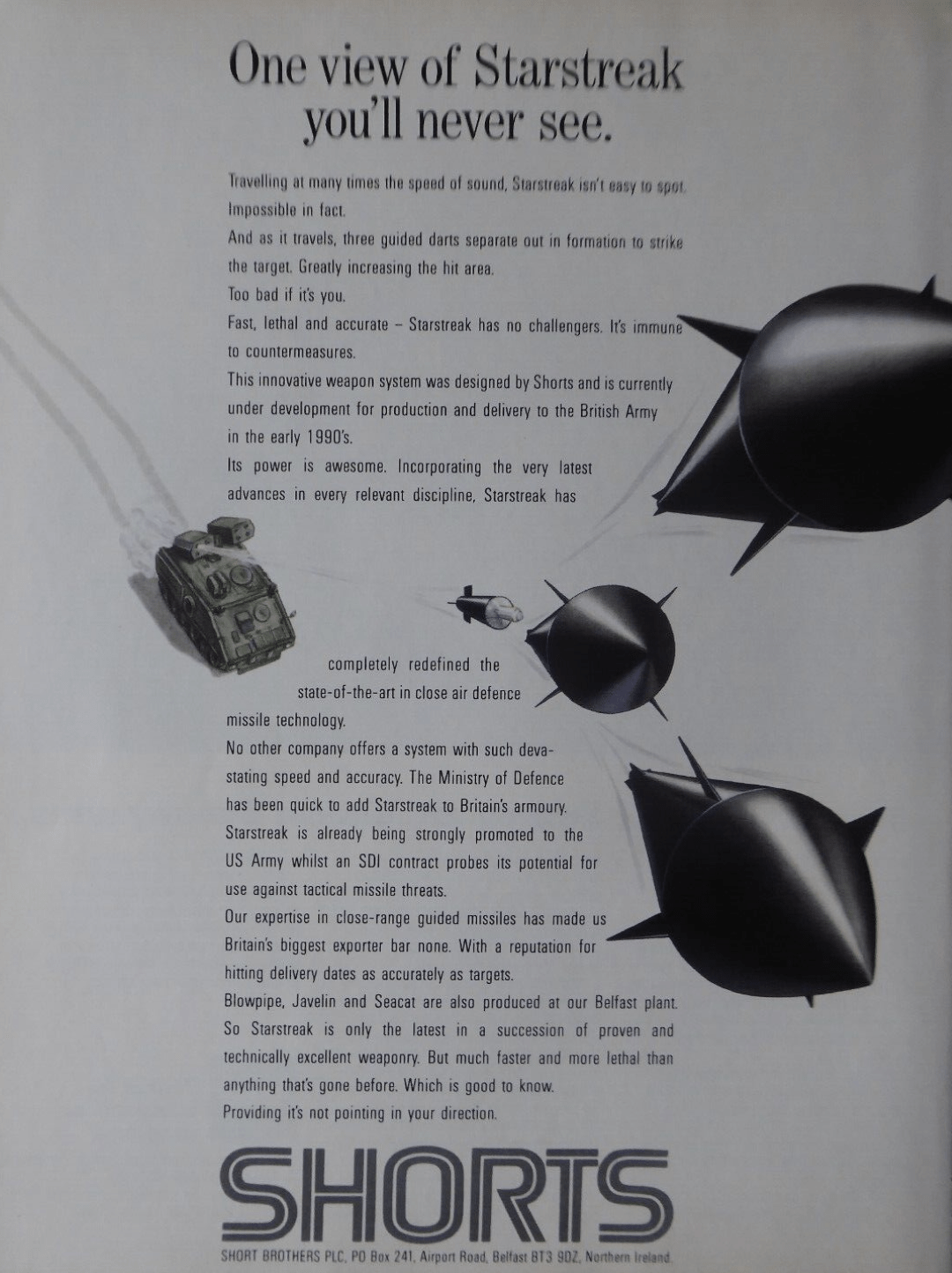
In 1986, the MoD awarded Shorts with a £225m contract for the final development and initial manufacture of Starstreak HVM in three versions.

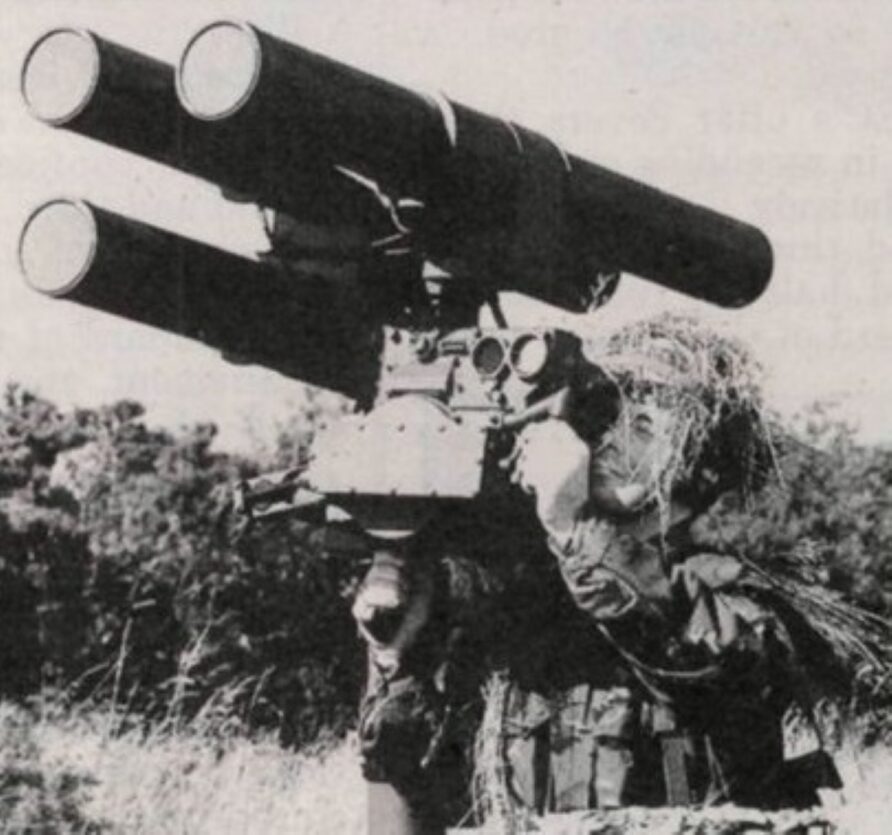
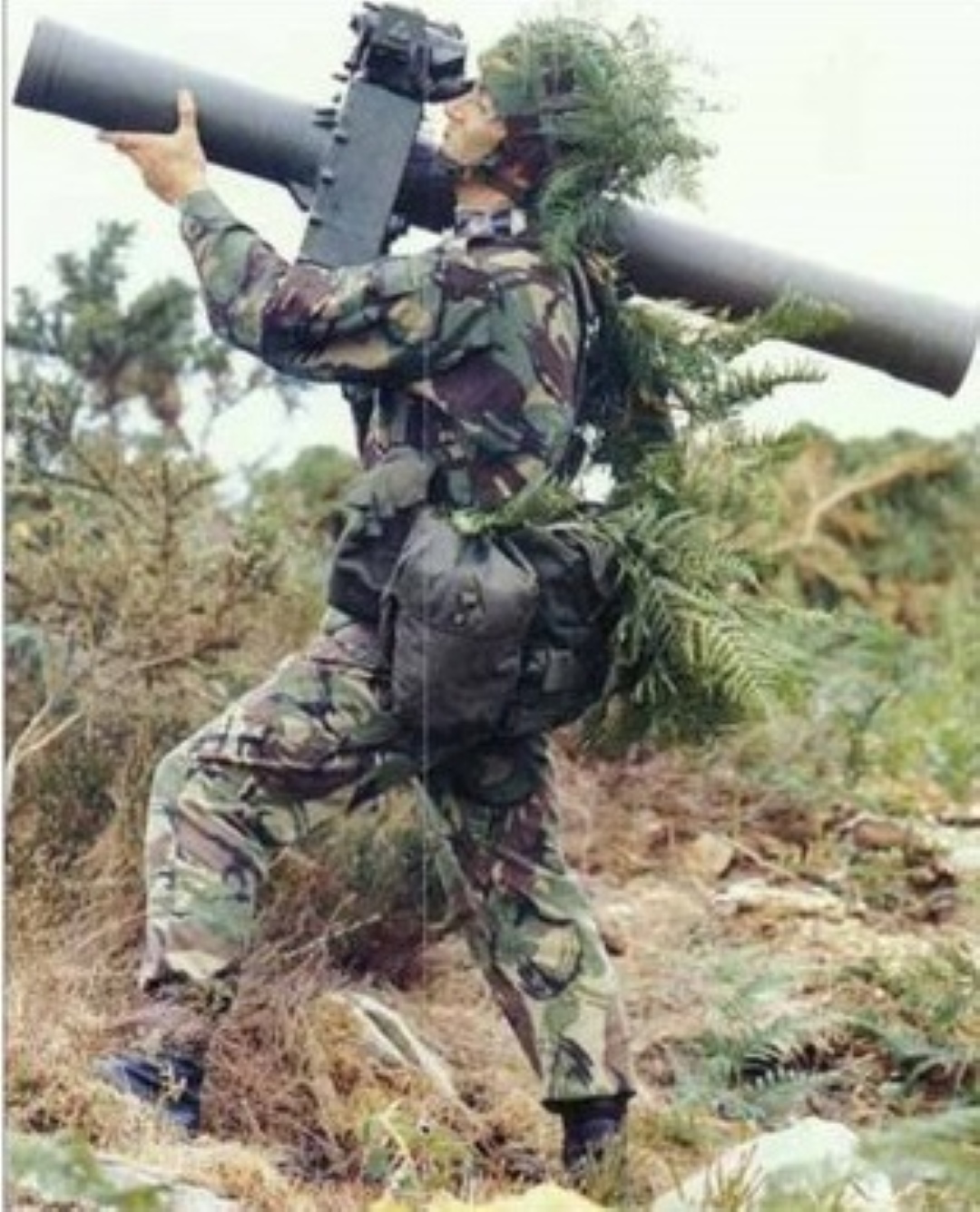
BAe took the Thunderbolt concept work and offered to export partners under the Common Forward Area Missile (CFAM) name, unsuccessfully.

CFAM was reportedly a Mach 4 missile, with a 5000m range. The missile body was 60 mm in diameter and had an overall length of 1.5m.
Starstreak HVM’s first firing in 1988 is shown below
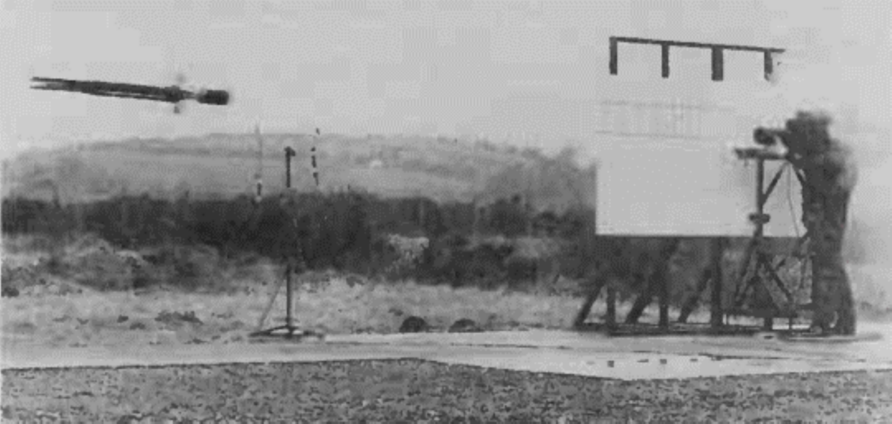
Even before Starstreak came into service, the MoD awarded a contract to Thorn EMI Electronics for four hundred Air Defence Alerting Devices (ADAD). The same technology had also been specified for the Eurofighter Typhoon, this would go on to become the Passive Infra-Red Airborne Tracking Equipment (PIRATE) system seen on the nose of the Typhoon.
In September 1988 Shorts partnered with McDonnell Douglas Helicopters and Martin Marietta to integrate Starstreak HVM onto the AH-64 Apache attack helicopter for close-range air defence.
This was called Helstreak

A year later, Shorts also demonstrated a naval mount called Seastreak.
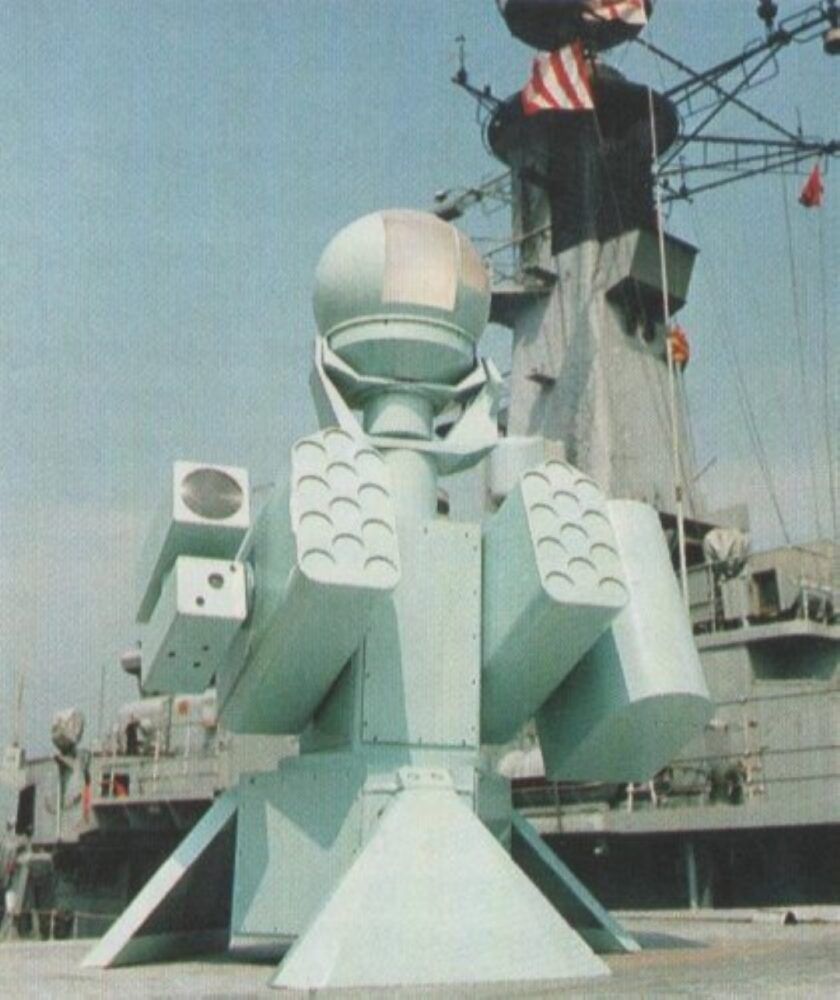
Under ‘Options for Change, the Royal Artillery was planned to have four air defence regiments, two equipped with Rapier (towed) and two with Starstreak HVM.
In 2001, the MoD awarded a £66 million contract to Thales Air Defence (formerly Shorts Missile Systems) for Successor Identification Friend or Foe for the British Army’s Starstreak HVM.

A follow-on contract implemented a thermal sighting system.
Thales was awarded an availability contract worth £200 million in 2008 under the Air Defence Availability Project (ADAPT);
The Minister of State for Defence Equipment & Support (Min DE&S), Quentin Davies MP, has today announced that Thales UK has been awarded a contract worth more than £200m from the UK Ministry of Defence (MoD) to deliver the Air Defence Availability Project (ADAPT) in support of the Starstreak high-velocity missile (HVM) system. He made the announcement during a visit to the company’s Belfast facility, where Starstreak is manufactured and assembled.
Missile Support Contract
Under the terms of the missile support contract, which will sustain up to 100 jobs for the Belfast site in Castlereagh, Thales UK will ensure that a specified level of availability of the Starstreak HVM system is provided to the UK Armed Forces. It also covers the support of all HVM equipment until the scheduled out-of-service date at the end of 2020.
Accompanied by Alex Dorrian, CEO Thales UK, and Steve Hill, Vice President and Managing Director of Thales UK’s air systems business, the Minister was given a tour of the site and given a briefing on the various products being developed there for the UK Armed Forces and for export. The Minister was joined on the tour by Peter Robinson, local site MP, Assembly Member and First Minister for Northern Ireland; and Arlene Foster, Minister of Enterprise, Trade and Investment, Northern Ireland Assembly.
Min DE&S also met the Trade Union representatives and a range of Thales employees, including apprentices, recent graduates, and staff who have been with the company for over 40 years. Missile Support Contract Steve Hill, Vice President and Managing Director of Thales UK’s air systems business, and head of the Belfast site, says: “The ADAPT contract is key to sustaining our current levels of employment and will protect up to 100 highly skilled, technical engineering jobs throughout the life of the project.”
Crucial Weapon System
The Minister for Defence Equipment & Support, comments: “This is an important contract with Thales UK as it ensures the availability of the high-velocity missile, a crucial weapon system for the UK Armed Forces. Through this £200m contract we are sustaining technologies within the UK industrial base that are important for our future defence needs, and sustaining up to 100 vital jobs over the next decade.
I am committed to providing our Armed Forces with the best possible equipment to deal with a wide range of potential operations.” Alex Dorrian, CEO Thales UK, says: “It is important to Thales that Quentin Davies MP has been able to visit us in Belfast, a centre of excellence within the global Thales Group. Belfast has supported the MoD for more than 50 years and the MoD is still the main customer for what we do here. We were pleased to be able to show him the type of technology undertaken here in Belfast.”
Some 530 of Thales UK’s 9,000 workforce are based at the Belfast site. The company is an important source of high-tech, high-skill employment in the region and in the last year has recruited around 30 people, including a high number of engineers. The site is planning to recruit around another 40 in 2009
ADAPT assured support out to 2020 and also included a capability insertion programme; the development of a new day/night fire control capability, automatic target tracking and a new missile standard, Starstreak II. The improvements were to be delivered under the HVM Integrated Programme Enhancement project. A new training system would also be introduced, taking advantage of the latest high-fidelity simulation technology.
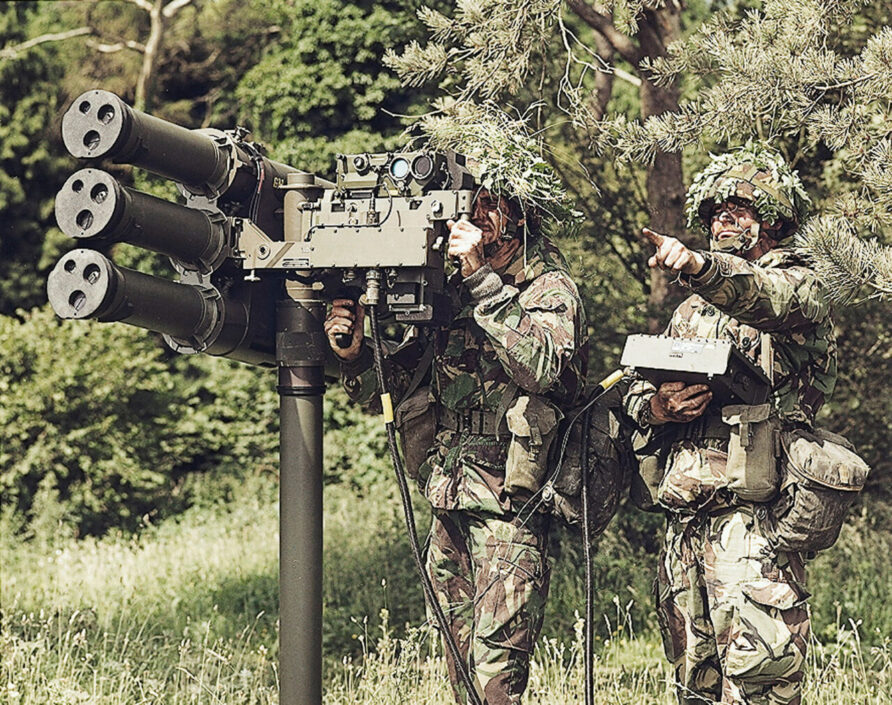
In 2011, the MoD and Thales came to an agreement on the Lightweight Multirole Missile;
Thales UK and the UK Ministry of Defence (MoD) have today announced an innovative approach to contracting under the principles of Team Complex Weapons (TCW).
The two parties have agreed to ‘re-role’ previously contracted budgets to facilitate the full-scale development, series production and introduction of the Lightweight Multi-role Missile (LMM) into service for UK Armed Forces.
“This is a clear demonstration of MoD and industry working in partnership…” Specific activities covered under this contract amendment include:- design, development and qualification of the laser beam rider version of LMM, production of an initial delivery quantity of 1,000 LMM, precision guidance system that will deliver a highly accurate performance against static and mobile targets and with low-collateral damage
The multi-role aspects of LMM mean that the UK will have the ability to use a single family of weapons to take on a variety of roles, including maritime role – LMM will be integrated as the Future Anti-Surface Guided Weapon Light FASGW(L) missile on the new Wildcat Lynx helicopter platform under a parallel programme with the UK MoD. Ground-to-ground role – the dual-effect warhead of LMM (blast fragmentation and shaped charge) makes it suitable for a wide range of ground targets including light/medium armour; air-launched role – the modular design of the missile permits the future development and introduction of alternative warheads, seekers including a semi-active laser (SAL) version for precision strike surface attack roles;
Speaking at the announcement, David Beatty, Managing Director of Thales UK’s Belfast facility, where LMM will be manufactured, said: “This is a clear demonstration of MoD and industry working in partnership to ensure that we deliver the products that our Armed Forces require in a timely and affordable manner.”
“This contract also helps broaden our UK design, development and manufacturing capabilities that specialise in lightweight and short-range missiles, such as our Starstreak and VT1 air defence products and the NLAW anti-armour weapon.”
“LMM is unique in that it’s the first lightweight weapon family to be specially designed to have a wide range of operational roles. We firmly believe that this is what Armed Forces require now and in the future as it not only can provide adaptability in the battlefield but also major benefits in whole life costs by having one weapon family with a highly cost-effective associated logistic support.”
“We have already conducted preliminary marketing of LMM and I can confirm that there is a very high level of interest in this new family of missiles. The main interest is coming from land, sea and air platform suppliers who are keen to have the lightweight, low cost and operational versatility that LMM can deliver. This contract shows Thales delivering the innovation intended by Team CW. ”
Alan Nicholl, Director Weapons at the MoD’s Defence Equipment and Support organisation, said: “This is an excellent example of the objectives of Team CW at work. Such an innovative approach taken by Thales and the MoD to lightweight modular weapons will enhance the UK complex weapons industrial capability with a family of products designed to meet the requirements of both the UK and this dynamic export market sector. It is an excellent example of the UK’s export-led industrial policy in action.”
Starstreak achieved some measure of public recognition in 2012 when it was used to provide part of the air-defence capability for the 2012 Olympic Games in London.
During the Olympic and Paralympic Games, London was briefly the world’s capital city. It hosted the greatest concentration of world leaders and monarchs, with over 160 in one place and at a predetermined time,” said Col. Jon Campbell, Commander, Joint Ground Based Air Defence (GBAD).”
“Both the home and international communities demanded that the Olympics were conducted in a safe and secure environment. From a GBAD perspective, the London 2012 air security plan was the most successful ever achieved in or by the UK, in terms of the Recognised Air Picture generated and the ability to respond proportionately to anything untoward within the London airspace.”
“Thales’s STARStreak missile system, and its Air Defence Alerting Device were absolutely essential to this success”
Olympics video
In 2013, 200 Starstreak II missiles were ordered by the MoD.
Starstreak HVM is currently in service with the Royal Artillery (12 Regiment and 106 Regiment Army Reserve) in Shoulder-Launched, Lightweight Multiple Launcher and Self Propelled variants.
Under Army 2020, 106 (Yeomanry) Regiment (Army Reserve) has two batteries (295 and 457) with Self Propelled HVM and one with the LML (265). The Regular HVM Regiment, paired with 106, is 12 Regiment. 12 Regiment has three batteries (T, 9 and 58) on Self-Propelled HVM and one with LML (12).
The Lightweight Multiple Launcher is also in service with the Royal Marines, as is the single-round launcher.
It was also recently announced that the British Army would integrate LMM with their Starstreak launch systems, namely the single canister launcher, Lightweight Multiple Launcher (LML) and FV433 Stormer vehicle.
In 2018, an additional £93 million contract was awarded to Thales for ongoing HCM and lightweight Multi-Role Missile (Martlet) support;
The project will enhance the High Velocity and Lightweight Multi-role Missile systems which are designed to intercept a wide range of air and surface threats such as enemy drones, helicopters and armoured vehicles. The upgrades include thermal imaging which ensures the High Velocity Missile system can be used 24 hours a day and ‘Friend or Foe’ identification, which will maximise intelligence on potential threats and targets.
Thales and Bharat Dynamics agreed to manufacture Starstreak HVM in India in 2021.
A September Parliamentary Answer confirmed 6 Stormer HVM vehicles and ‘hundreds’ of HVM Starstreak missiles had been gifted to Ukraine following the Russian invasion in early 2022.
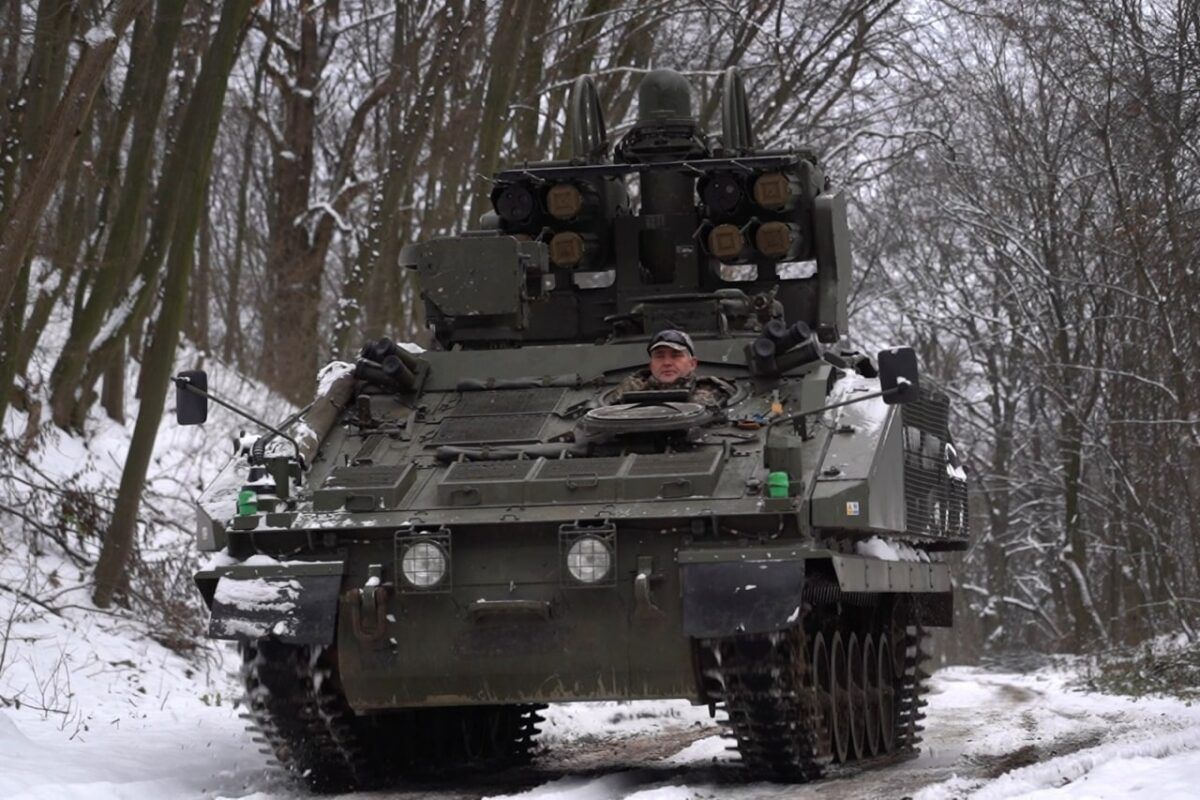
With video footage later in the year.
The Royal Artillery Association released details of a change to HVM Stomer organisations in late 2022
Due to operational demand, 137 (Java) Battery will return to the Gunners’ order of battle in the New Year as a Short Range Air Defence (SHORAD) Battery. Equipped with the High Velocity Missile system mounted on the Stormer vehicle, joining 12 Regt RA on Thorney Island
The Battery will form up in the spring and be ready for deployment in the Autumn. In recent times, ‘The Jumbos’ were part of 40 Regt RA (The Lowland Gunners) and then 26 Regt RA before being placed into Suspended Animation in 2015.
In response to a Written Question, the MoD confirmed a replacement order had been placed, alongside the development of a new version of HVM
In order to replenish the Starstreak High Velocity Missiles (HVM) Granted in Kind to Ukraine, the Ministry of Defence placed a contract with Thales on 30 Sept 2022 to supply a number of HVM from the remaining stock held by the company. These missiles are due for delivery in 2023. The number of missiles being supplied is operationally sensitive.
A further contract was placed with Thales on 21 December 2022 A further contract was placed with Thales on 21 December 2022 to commence work on development of a new version of the HVM.
HVM also continued to be used in Ukraine in 2023.
In a written response to the Defence Select Committee report, ‘Ready for War’, in April 2024, the MoD stated
To date investments include support to deliver a large purchase of 155mm munitions, building storm shadow stockpiles, supply chain mapping, wargaming, enhancements to a range of critical infrastructure, and medical stockpiles.
In addition to these uplifts, we have placed almost £1Bn in contracts to replenish UK stocks of equipment and munitions already granted to Ukraine. Contracts have been placed to replenish UK stockpiles include Next Generation Light Anti-Tank Weapons; Starstreak High Velocity Missiles; Lightweight Multirole Missiles; Javelin missiles; Brimstone missiles; 155mm artillery rounds; and 5.56mm rifle rounds
As Stormer is scheduled to leave service in 2026, the British Army articulated a requirement for an interim solution, with multiple defence sources indicating this could combine the Thales Rapid Ranger mount, and the Eurovesa VAMTAC vehicle, in service with the armed forces of Malaysia.
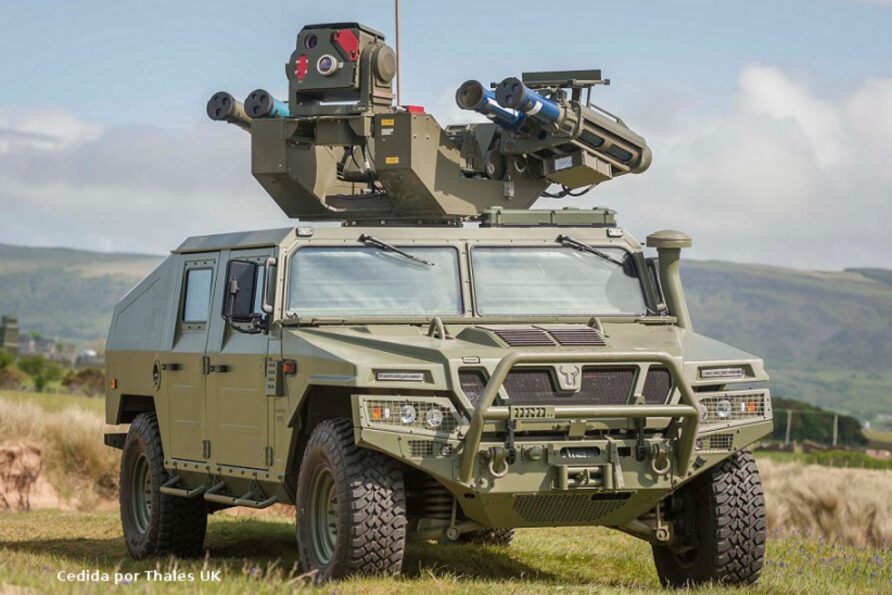
Defence media reported in mid-2024 that an order for VAMTAC would go ahead, with an initial 12 vehicles.
Before reading on, would you mind if I brought this to your attention?
Think Defence is a hobby, a serious hobby, but a hobby nonetheless.
I want to avoid charging for content, but hosting fees, software subscriptions and other services add up, so to help me keep the show on the road, I ask that you support the site in any way you can. It is hugely appreciated.
Advertising
You might see Google adverts depending on where you are on the site, please click one if it interests you. I know they can be annoying, but they are the one thing that returns the most.
Make a Donation
Donations can be made at a third-party site called Ko_fi.

Think Defence Merch
Everything from a Brimstone sticker to a Bailey Bridge duvet cover, pop over to the Think Defence Merchandise Store at Red Bubble.
Some might be marked as ‘mature content’ because it is a firearm!
Affiliate Links
Amazon and the occasional product link might appear in the content, you know the drill, I get a small cut if you go on to make a purchase
Starstreak HVM Capabilities
Starstreak HVM is an extremely lethal weapon system;
- When combined with ADAD, detection is completely passive and can operate during day or at night
- It can be networked and separated from the detection system using a simple cable
- The missile has extremely high speed, if an aircraft does detect the launch, it has very little time to do anything about it
- The missile guidance system cannot be jammed and is immune to countermeasures
- The ‘hitiles’ have both a great deal of kinetic energy but also a delayed action fuze that initiates inside the target
Starstreak also has a secondary ground attack capability and comprises several elements, in addition to various training aids and ancillaries;
High-Velocity Missile (HVM)
The 7 km range Mach 3.5 missile is 1.4m long, 0.27m in diameter and weighs 16.8 kg in its sealed launch tube.
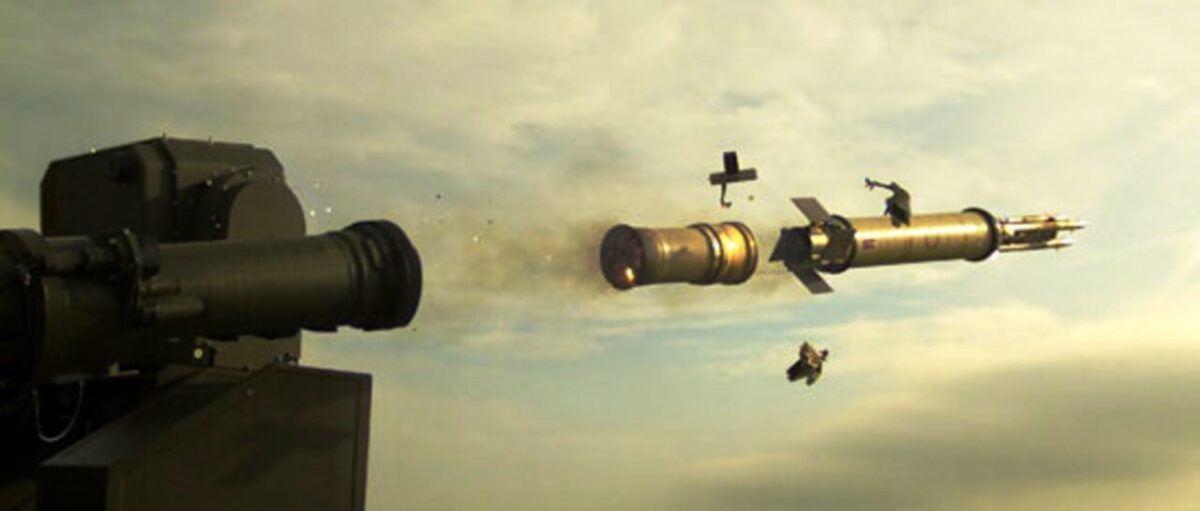
As can be seen from the video below, the launching sequence is a two-stage process, the first stage ejects the missile to a safe distance, whereupon the main motor propels the missile to the burnout stage.
As the second stage motor burns out, the dart release mechanism operates the three darts coast to the target. Each dart contains a delayed initiation 0.9 kg blast fragmentation warhead for maximum target effects.

Coasting is perhaps not the best description, though, Starstreak HVM operates at a very high speed, Mach 3+.
This high speed is designed to allow the system to be used against pop-up and fleeting targets. It also reduces the possibility of detection and counter-attack.
Guidance is as per Javelin S15, laser beam riding. The operator places an indicator on the target and the tracking system maintains the aim point on the target. No countermeasures are possible, and flares or chaff are ineffective.

Starstreak II (HVM A5) increases maximum range to ‘beyond 7 km’
Shoulder Launched Aiming Unit
Although the Shoulder-Launched aiming unit is less commonly used, it is rapid to deploy and contains a stabilised monocular sight and aiming point injector.
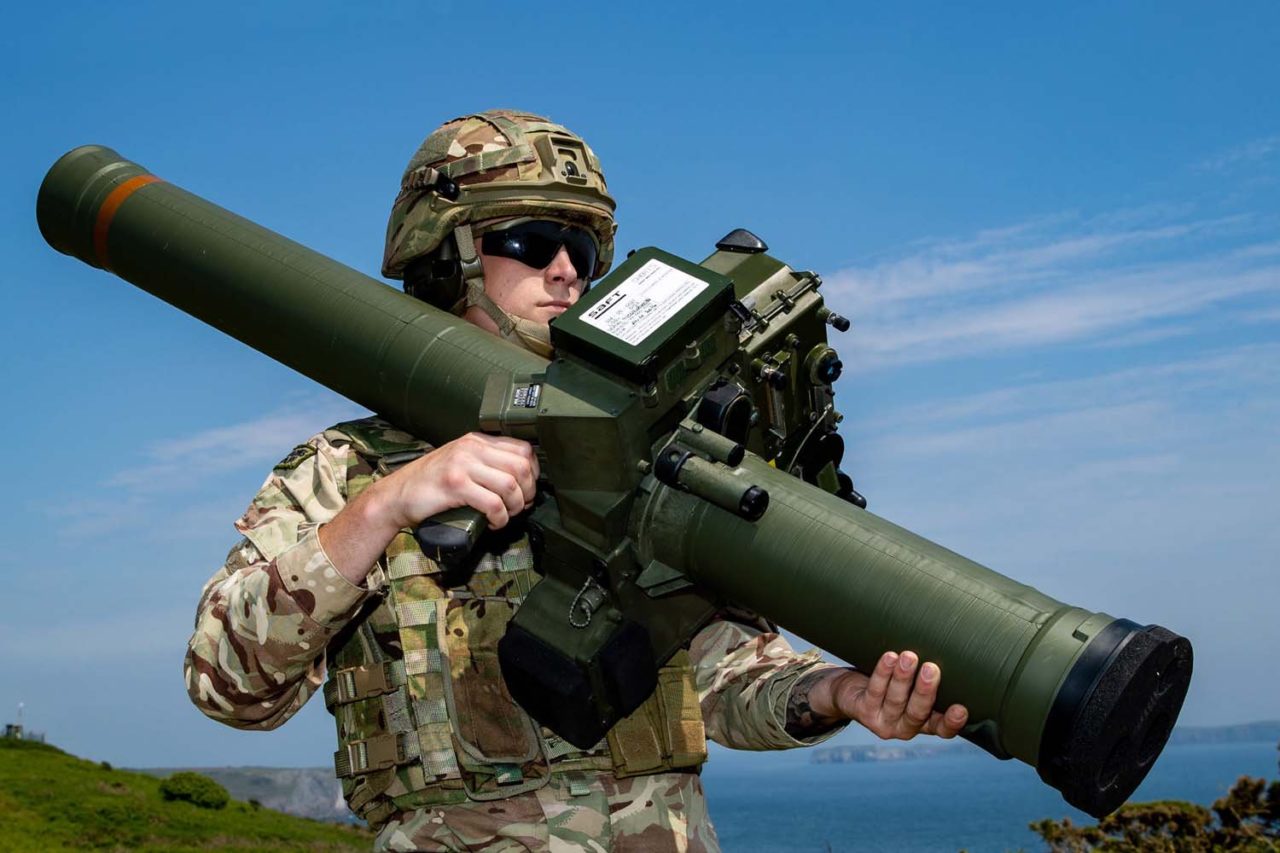
The Shoulder Launched aiming unit can also be fitted with an IFF system.

Lightweight Multiple Launcher (LML)
The lightweight multiple launchers (LML) can be fitted with up to three missiles to enable multiple targets to be quickly engaged, one after the other. It uses a standard aiming point with IFF and Thales ASPIC automatic fire control system.

The tripod weighs 16 kg, the traverse head 19.5 kg, the sighting system 9 kg and the thermal sight, 6 kg.

A GRiDCASE 2507 is used as the Data Entry Device (DED) for the LML.
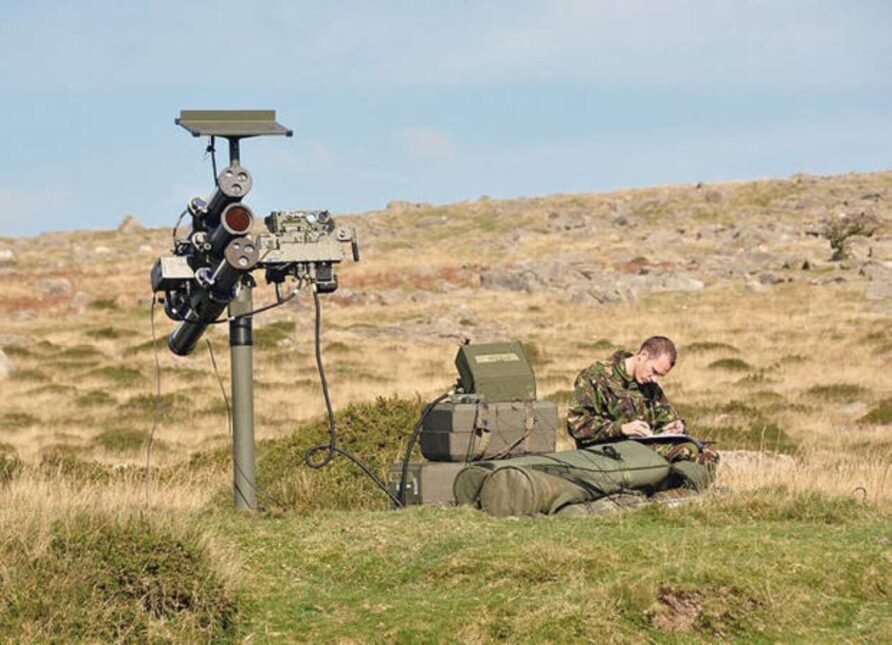
Thales unveiled a new Lightweight Multiple Launcher in 2015 that reduced the missile count by one but reduced weight.
It also has the capability to use the Lightweight Multirole Missile (Martlet) and thermal imaging optics, together with full network connectivity for integration with other air defence systems.
Air Defence Alerting Device (ADAD)
The Thales Air Defence Alerting Device (ADAD) is a passive infra-red detection, classification, and prioritisation system used with both the LML and SP launch systems. Operating in the 8-14micron waveband, it can detect fixed-wing targets at 9 km and helicopters at 6 km.
It consists of three main components, the rotating scanner infra-red assembly (SIA), electronic pack remote display unit (EPRDU) and electronic pack processing unit (EPPU).
A power supply unit and cables complete the system. The detector uses a continuously rotating mirror, providing 360-degree coverage at -7 to +17 degrees elevation.
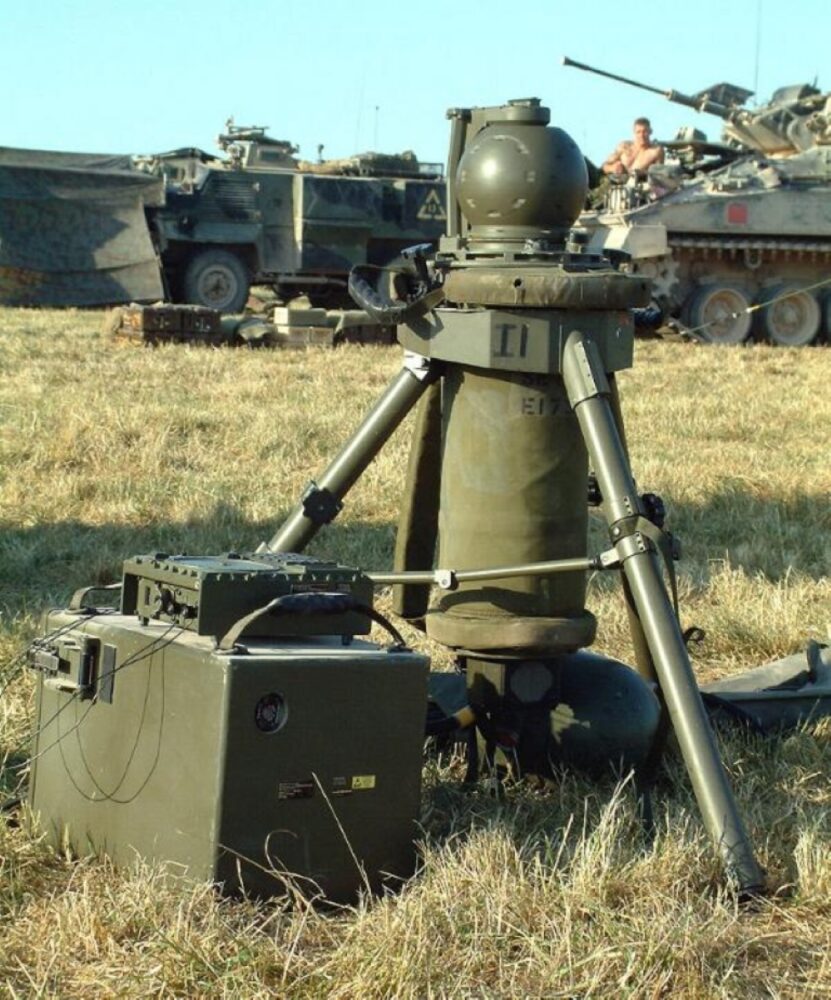
The electronics processor and display unit provide prioritised target information to the operator and can also be used to automatically cue the weapon launch system. Multiple display units can be connected, up to 500m from the scanner.
The total programme cost for the ADAD programme was approximately £100m
Self Propelled HVM
The Alvis/BAE Stormer vehicle is used as the base for the Self-Propelled Starstreak HVM system.

The vehicle carries eight missiles in a ready-to-launch assembly and up to a further twelve missiles in the rear compartment.

The Air Defence Alerting Device (ADAD) is mounted on the missile launch assembly and the thermal sighting assembly is mounted on the front right-hand side of the vehicle roof.

This is a Thales unit, based on the STAIRS C system.
There have been a handful of vehicle options in addition to Stormer, Pinzgauer and the Eurovesa VAMTAC.

Change Status
| Change Date | Change Record |
| 20/05/2016 | Initial issue |
| 28/07/2021 | Refresh and format update |
| 25/11/2022 | Ukraine update and format refresh |
| 02/08/2023 | Minor update |
| 05/05/2024 | Minor Update |
Read more (Affiliate Link)
Discover more from Think Defence
Subscribe to get the latest posts sent to your email.



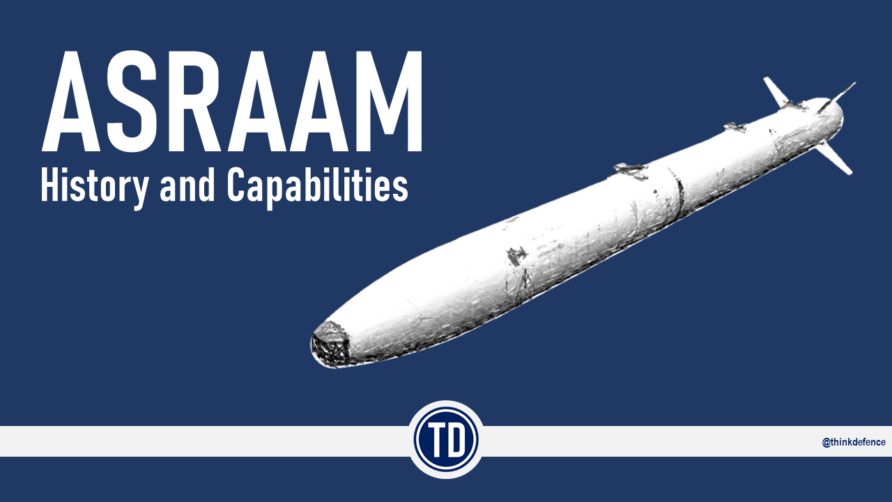


There is nothing here
Work in progress David!
The foresight to know about Ukraine 3 months ahead of the invasion is impressive!
Good spot Stephen, corrected the change record to reflect correct date